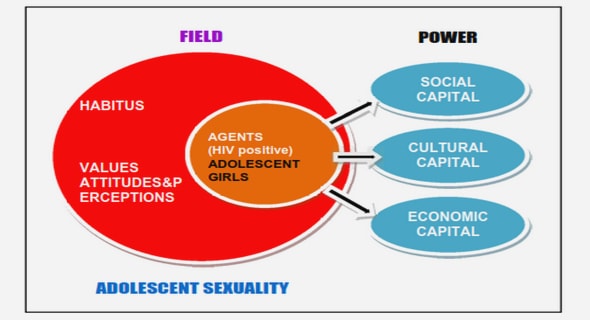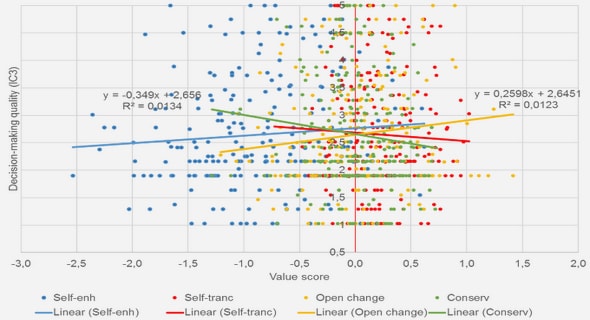Get Complete Project Material File(s) Now! »
Chapter Three SELECTED CHLORINATED COMPOUNDS
Introduction
The IR LPHP of W(CO)6 in the gas phase leads to unsaturated W(CO)x species; these have been shown to be very effective and selective abstractors of chlorine atoms from a wide range of organic substrates, and offer a clean and low energy route into gas phase organic radical chemistry [1]. The principal aim of this study is to illustrate the various reactions of a particular organic radical by investigating the pyrolysis of selected organochlorine precursors in the presence of W(CO)6. The chemistry of these organic radical species is dominated by radical-radical and radical-molecule reactions; namely, combination, disproportionation, addition and abstraction.
A comprehensive investigation demands that the mechanism pertaining to pyrolysis of the organochlorine precursor in the absence of W(CO)6 be understood. The decomposition of an organochlorine compound is initiated by dehydrochlorination or C–Cl fission, the latter effecting formation of an organic radical. The molecular β-elimination of HCl from an organochlorine species will afford the corresponding olefin through formation of an additional carbon-carbon bond; conversely, in organochlorine compounds that do not possess a β-hydrogen, decomposition proceeds through α-elimination of HCl yielding a carbene moiety [2, 3].
A number of techniques, including photolysis and conventional pyrolysis, have been used to initiate decomposition of an organochlorine species; all have associated drawbacks. Photolysis is limited to compounds that absorb radiation directly, while conventional pyrolysis, unlike IR LPHP, is not homogeneous; consequently, reaction is complicated by heterogeneous contributions. In this investigation, the gas phase decomposition of 2-chloropropane, 2-chloro-2-methylpropane, E-1,2-dichloroethene, propargyl chloride (3-chloro-1-propyne), chloroacetonitrile, benzyl chloride ((chloromethyl)benzene), α,α’-dichloro-o-xylene (1,2-bis(chloromethyl)benzene) and chloroacetic acid, in the presence and absence of W(CO)6, was initiated by IR LPHP and the products characterised using a combination of FT-IR, GC-MS and matrix isolation spectroscopy.
Chloropropane
The IR LPHP of 2-chloropropane has been investigated by Kubat and Pola [4], with the conclusion that reaction proceeds through the molecular elimination of HCl yielding propene. In the present work, a sample of 2-chloropropane and W(CO)6 was exposed to low laser power (i.e. temperature); the most significant products were propene, propane, and 2,3-dimethylbutane. These results are consistent with the selective abstraction of Cl to yield the isopropyl radical, which either combines to 2,3-dimethylbutane or undergoes disproportionation to propane and propene.
The disproportionation to combination ratio of isopropyl, which is reported to be in the range of 0.54 to 0.69 [5-8], predicts formation of propane and propene in preference to 2,3-dimethylbutane. In this study, propane was detected at a level slightly greater than that of the combination product, while the level of propene exceeded that of propane. It is evident from these results that an alternative pathway to propene exists, most probably involving molecular dehydrochlorination of starting material; certainly, the decomposition of 2-chloropropane alone commenced at a temperature comparable to that of the alkyl chloride in the presence of W(CO)6.
Chloro-2-Methylpropane
The thermolysis of 2-chloro-2-methylpropane in incident and reflected shock waves has been investigated by Lifshitz [9], with the conclusion that reaction proceeds through molecular elimination of HCl to form 2-methyl-1-propene. In the present study, a sample of 2-chloro-2-methylpropane alone was exposed to the output of a continuous wave (CW) CO2 laser at low laser power with comparable results.
On co-pyrolysis with W(CO)6 at a similar temperature, the major products were 2-methyl-1-propene, 2,4,4-trimethyl-1-pentene, 2,4,4-trimethyl-2-pentene, 2,2,4,6,6-pentamethyl-3-heptene and 3-methylene-2,2,6,6-tetramethylheptane; isobutane was detected in trace amount. These results are consistent with the selective abstraction of Cl to yield the tertiary butyl radical; this can undergo addition reactions (with an olefin) or disproportionation to 2-methyl-1-propene and isobutane. The absence of 2,2,3,3-tetramethylbutane precludes combination, which given the low yield of isobutane, is consistent with the reported disproportionation to combination ratio of 2.32 of the tertiary butyl radical [5].
2-methyl-1-propene was detected at a level significantly greater than that of isobutane, suggesting an alternative formation mechanism, probably involving dehydrochlorination of starting material. Certainly, the decomposition of 2-chloro-2-methylpropane alone, like 2-chloropropane, commenced at a temperature comparable to that of the alkyl chloride in the presence of W(CO)6.
Addition of the tertiary butyl radical to the least substituted sp2 carbon atom of 2-methyl-1-propene (followed by homolytic fragmentation of a single Cβ–H bond in the resulting addend radical) will afford 2,4,4-trimethyl-1-pentene or 2,4,4-trimethyl-2-pentene. There are a total of eight Cβ–H bonds in the addend radical; homolytic cleavage of any one of six (which are equivalent) will yield 2,4,4-trimethyl-1-pentene, while homolysis of any one of the remaining two (which are also equivalent) will afford 2,4,4-trimethyl-2-pentene. Consequently, the former is expected at a greater yield than that of the latter; in this study, 2,4,4-trimethyl-2-pentene was detected at a level considerably less than that of 2,4,4-trimethyl-1-pentene.
In a manner analogous to the formation of 2,4,4-trimethyl-1-pentene and 2,4,4-trimethyl-2-pentene, addition of the tertiary butyl radical to the least substituted sp2 carbon of the former (followed by homolytic cleavage of a Cβ–H bond in the resulting addend radical) will afford 2,2,4,6,6-pentamethyl-3-heptene or 3-methylene-2,2,6,6-tetramethylheptane. In contrast to the addend radical effected from addition of the tertiary butyl radical to 2-methyl-1-propene, this addend radical has a total of seven Cβ–H bonds of which homolytic cleavage of any one of four (which are equivalent) will generate 2,2,4,6,6-pentamethyl-3-heptene; scission of any one of the remaining three (which are also equivalent) will afford 3-methylene-2,2,6,6-tetramethyl-heptane. As a result, the yield of each is expected to be similar; in this investigation, 2,2,4,6,6-pentamethyl-3-heptene was detected at a level comparable to that of the latter.
There was no evidence to indicate addition of the tertiary butyl radical to 2,4,4-trimethyl-2-pentene. This is consistent with the relative population of each of the primary addition products; the yield of 2,4,4-trimethyl-2-pentene was less than that of 2,4,4-trimethyl-1-pentene. A proposed pyrolysis scheme for 2-chloro-2-methylpropane with W(CO)6 is illustrated in Figure 3.1.
E-1,2-Dichloroethene
The IR LPHP of E-1,2-dichloroethene has been investigated by Kubat and Pola [4]; pyrolysis at low temperature leads to E–Z isomerisation, which is succeeded at higher laser power (i.e. temperature) by dehydrochlorination to form chloroacetylene. A moderate amount of acetylene was observed and ascribed to the elimination of molecular chlorine. The isomerisation of E– and Z-1,2-dichloroethene has been extensively studied by several other workers [10-12].
In the present investigation, a mixture of SF6 and E-1,2-dichloroethene was exposed to the output of a CW CO2 laser at a power level so as to promote only isomerisation, producing an approximately equimolar mixture of the E and Z isomers. A small quantity of outgassed W(CO)6 was then admitted to the reaction cell, and continued irradiation of the gaseous contents at a level insufficient for isomerisation led to decay of IR features of the two isomers at different rates. The first-order kinetic plots, which are illustrated in Figure 3.2, are consistent with reactions whose activation energies differ by the known zero point energy difference of 1840 ± 380 J mol-1 [10], and an effective temperature of 650 ± 150 K. This ‘kinetic isomer effect’ suggests that loss reactions of the two isomers involve Cl abstraction pathways whose transition states differ little in energy.
The stable products derived from the pyrolysis of E-and Z-1,2-dichloroethene and W(CO)6 were identified using FT-IR and GC-MS spectroscopy as chloroethene, ethylene, benzene and acetylene, the latter observed in only trace amount. There were no peaks in the post-pyrolysis infrared spectrum that could be attributed to chloroacetylene or HCl. These
results are consistent with a mechanism involving the 2-chloroethenyl radical, the species effected through the abstraction of atomic chlorine from starting material.
The transfer of atomic hydrogen to an alkyl or alkenyl radical (of which 2-chloroethenyl is an example) is the most common abstraction reaction [13], and will account for the production of chloroethene. While the elimination of molecular chlorine from starting material will account for the formation of acetylene at a higher temperature in the absence of W(CO)6, it can be discounted in the present investigation as pyrolysis was initiated at a significantly lower temperature. Presumably, the production of acetylene is, in part, attributable to homolytic fragmentation of the 2-chloroethenyl radical through cleavage of the C–Cl bond.
The intensity of absorbance bands ascribed to ethylene and benzene was found to increase at the expense of those assigned to chloroethene as the duration of pyrolysis was extended; this is consistent with a mechanism involving the selective abstraction of atomic chlorine from chloroethene to yield the vinyl radical. The disproportionation of vinyl radical, while accounting for the production of ethylene (and acetylene), can be discounted; the absence of 1,3-butadiene (the combination product) is not consistent with the reported disproportionation to combination ratio of the vinyl radical, namely 0.22 [14]. It is possible to rationalise this result in terms of the radical concentration. The population of vinyl radicals as a proportion of the total population is expected to be relatively low (vinyl radicals are effected through secondary reaction); consequently, the probability of collision and, by corollary reaction, is lowered. An alternative mechanism, in which the vinyl radical abstracts atomic hydrogen, may account for the formation of ethylene. Homolytic fragmentation of the vinyl radical through cleavage of the C–H bond will effect the production of acetylene.
The level of acetylene and benzene effected from the pyrolysis of E-1,2-dichloroethene in the presence of W(CO)6 is ostensibly inconsistent with that expected; this can be rationalised on the basis of a mechanism involving the trimerisation of acetylene to benzene, a process well known to be catalysed by transition metals [15-20]. The intensity of absorbance bands ascribed to acetylene was not observed to vary significantly with the duration of pyrolysis, suggesting that the mechanism responsible for production, specifically homolysis of 2-chloroethenyl (C–Cl bond scission) or vinyl (C–H bond scission), was approximately equivalent to that associated with depletion. A proposed scheme for E-1,2-dichloroethene IR LPHP in the presence of W(CO)6 is illustrated in Figure 3.3.
Propargyl Chloride
The thermal isomerisation and decomposition of propargyl chloride (3-chloro-1-propyne) has been extensively studied using shock tube techniques [21-24] in the light of its role in the formation of the propargyl radical (an intermediate recognised in the production of benzene in fuel-rich systems) through homolysis of the C–Cl bond. In all cases, scission of the C–Cl bond competes with molecular elimination of HCl with a branching ratio that is dependent on the temperature [21-24]. Kumaran and co-workers have reported that the elimination of HCl from propargyl chloride dominates at T < 1455 K [24], while Kern and co-workers have derived a branching ratio (HCl elimination to C–Cl fission) of 0.86 : 0.14 at 1350 K ≤ T ≤ 1700 K [21]. It is proposed that molecular dehydrochlorination will effect the formation of singlet cyclopropenylidene [21, 22], the predicted global minimum on the C3H2 potential energy hypersurface [25]. The subsequent insertion of singlet cyclopropenylidene into C–H bonds and addition to multiple bonds is postulated to account for the formation of C2H2, C4H2 and C6H2, the predominant products observed following thermolysis of propargyl chloride [21, 22].
In contrast, the thermolysis of propargyl chloride in the presence of sodium vapour at 623 K ≤ T ≤ 673 K is reported to effect formation of C3H3 exclusively, through selective abstraction of atomic chlorine [26]. While combination of C3H3, of which H–C≡C–CH2· (2-propynyl) is the preferred constitutional isomer [27, 28], was expected to yield 1,5-hexadiyne, and to a lesser extent 1,2,4,5-hexatetraene and 1,2-hexadien-5-yne, the major products were in fact benzene and 1,3-hexadien-5-yne. In fact, the yield of 1,5-hexadiyne was significantly lower than all other C6H6 isomers; this suggested that chemically activated 1,5-hexadiyne expeditiously rearranged to 1,3-hexadien-5-yne or benzene. Alternatively, rearrangement of 2-propynyl prior to combination would account for the low yield of 1,5-hexadiyne [26].
The photolysis of propargyl chloride has been studied by a number of workers [29-36], with an express focus on the initial decomposition step, specifically the elimination of HCl or C–Cl bond fission. In all cases, it was concluded that the predominant dissociation channel, in contrast to that pertaining to thermolysis, is C–Cl bond fission with a minor channel generating HCl and C3H2 fragments. Lee and Lin [36] have reported a branching ratio (H–Cl elimination to C–Cl fission) of 0.16 : 0.84, which is in marked contrast to that derived by Kern and co-workers from the thermolysis of propargyl chloride [21].
In the present investigation, a sample of propargyl chloride was exposed to the output of a CW CO2 laser in the absence and presence of W(CO)6. The most significant product observed following the pyrolysis of propargyl chloride in the absence of W(CO)6 and at lower powers (i.e. temperature) was 1-chloro-1-propyne, which is consistent with isomerisation of the starting material. In contrast to earlier shock tube studies [21-24], there was no evidence to indicate formation of 1-chloro-1,2-propadiene (chloroallene); 3-chlorocyclopropene, another C3H3Cl isomer, was not detected in this investigation. At a slightly elevated temperature, the isomerisation of propargyl chloride was followed by the molecular elimination of HCl to yield C3H2; homolytic fragmentation of the C–Cl bond, which effected the formation of C3H3, occurred to a lesser extent.
The most significant pyrolysis product at a higher temperature in the absence of W(CO)6 was chlorobenzene, and is ascribed to intermolecular insertion of the divalent carbon of C3H2 (specifically, singlet cyclopropenylidene) into the acetylenic or saturated C–H bonds of propargyl chloride, with rearrangement of the resultant addend. Intermolecular insertion of singlet cyclopropenylidene into the saturated C–H bonds of 1-chloro-1-propyne will also yield chlorobenzene, following rearrangement of the vibrationally excited intermediate.
Intramolecular reaction of cyclopropenylidene can be discounted; insertion of the divalent carbon into the Cγ–H bond is not possible, while the instability of the olefinic species derived from insertion at the Cβ–H bond will ostensibly prohibit its formation. At very high temperatures, the absorbance band ascribed to benzene intensified at the expense of those assigned to chlorobenzene; this is consistent with homolysis of the C–Cl bond in the latter to yield the phenyl radical, which will abstract atomic hydrogen to form benzene.
Table of Contents
ABSTRACT
ACKNOWLEDGEMENTS
TABLE OF CONTENTS
LIST OF TABLES
LIST OF FIGURES
LIST OF ABBREVIATIONS
Chapter One. INTRODUCTION
1.1 REVIEW OF ORGANIC RADICAL CHEMISTRY
1.2 A MILD ROUTE INTO GAS PHASE ORGANIC RADICAL CHEMISTRY
1.3 REFERENCES
Chapter Two. EXPERIMENTAL
2.1 INTRODUCTION
2.2 INFRARED LASER POWERED HOMOGENEOUS PYROLYSIS
2.3 EQUIPMENT
2.4 CHEMICALS
2.5 EXPERIMENTAL PROCEDURE
2.6 EXPERIMENTAL ANALYSIS
2.7 MATRIX ISOLATION SPECTROSCOPY
2.8 IR LPHP TUNEABLE DIODE LASER SPECTROSCOPY
2.9 THEORETICAL CALCULATIONS
2.10 REFERENCES
Chapter Three. SELECTED CHLORINATED COMPOUNDS
3.1 INTRODUCTION
3.2 2-CHLOROPROPANE
3.3 2-CHLORO-2-METHYLPROPANE
3.4 E-1,2-DICHLOROETHENE
3.5 PROPARGYL CHLORIDE
3.6 CHLOROACETONITRILE
3.7 BENZYL CHLORIDE
3.8 α,α’-DICHLORO-O-XYLENE
3.9 CHLOROACETIC ACID
3.10 CONCLUSION
3.11 REFERENCES
Chapter Four. ACYL CHLORIDES
4.1 INTRODUCTION
4.2 CHLOROACETYL CHLORIDE
4.3 PROPANOYL CHLORIDE
4.4 3-CHLOROPROPANOYL CHLORIDE
4.5 ACRYLOYL CHLORIDE
4.6 E-2-BUTENOYL CHLORIDE
4.7 METHACRYLOYL CHLORIDE
4.8 CYCLOPROPANECARBONYL CHLORIDE
4.9 CONCLUSION
4.10 REFERENCES
Chapter Five. DIACYL CHLORIDES
5.1 INTRODUCTION
5.2 MALONYL CHLORIDE
5.3 FUMAROYL CHLORIDE
5.4 SUCCINYL CHLORIDE
5.5 DIGLYCOLOYL CHLORIDE
5.6 CONCLUSION
5.7 REFERENCES
Chapter Six. HALOGENATED THREE & FOUR-MEMBERED RING COMPOUNDS
6.1 INTRODUCTION
6.2 CYCLOPROPYLMETHYL CHLORIDE
6.3 EPICHLOROHYDRIN
6.4 CYCLOBUTYLMETHYL CHLORIDE
6.5 4-(BROMOMETHYL)-2-OXETANONE
6.6 CONCLUSION
6.7 REFERENCES
GET THE COMPLETE PROJECT
LASER PYROLYSIS OF SELECTED HALOGENATED COMPOUNDS WITH W(CO)6


